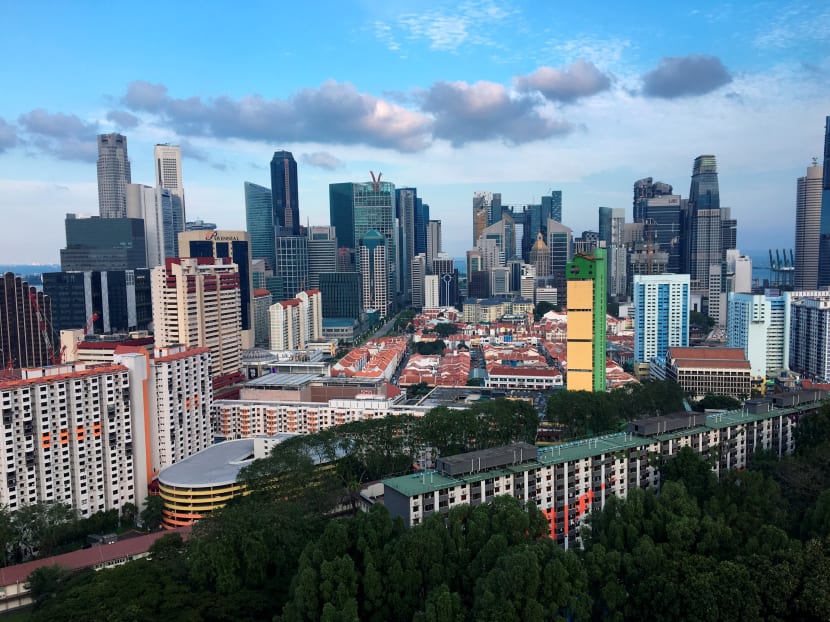Inflation slows, but lower-income group hardest hit by higher cost of living
SINGAPORE — Inflation in the first six months of the year has slowed compared to the second half of last year, based on data from the Department of Statistics (SingStat) released on Monday (July 23).

The bottom 20 per cent households have felt the brunt of a higher cost of living, due to increased food, water and electricity prices as well as medical and dental treatment costs.
SINGAPORE — Inflation in the first six months of the year has slowed compared to the second half of last year, based on data from the Department of Statistics (SingStat) released on Monday (July 23).
Nevertheless, the bottom 20 per cent of households have felt the brunt of a higher cost of living, due to increased food, water and electricity prices as well as medical and dental treatment costs.
The Consumer Price Index (CPI) rose 1.5 per cent for this group between January and June, when excluding imputed rentals on owner-occupied accommodation (OOA) which do not involve actual cash expenditure for households that own their homes.
In comparison, inflation was 1.2 per cent for both the middle 60 per cent and the highest 20 per cent income groups.
Dr Tan Khay Boon, a senior lecturer at SIM Global Education, said the bottom 20 per cent households “suffered the most in terms of expenses in food, services, medical and utilities”. “More help may be rendered to this group but the most effective way to counter higher living costs is to promote economic growth and boost wage growth through productivity enhancements,” he said.
UOB economist Francis Tan pointed out that targeted Government subsidies have helped offset the recent increases in water and electricity tariffs for lower income households.
However, higher water and electricity prices are also passed on to them as consumers, he noted.
Electricity tariffs increased by an average of 6.3 per cent between January and March, compared to the previous three months. They went up another 2.8 per cent, on average, between April and June.
Water prices were raised by 15 per cent in July last year as part of a 30 per cent hike spread over two phases. The second phase kicked in this month.
CIMB economist Song Seng Wun reiterated that CPI excluding imputed rentals on OOA, rose more sharply for the bottom 20 per cent households as a larger proportion of their total expenditure is spent on basic necessities, such as healthcare and education.
By and large, the prices of these essential items have gone up over time, said OCBC Bank economist Selena Ling.
The CPI-All Items for the lowest 20 per cent income group fell by 0.2 per cent in the first half of this year — the seventh consecutive half-yearly decline, SingStat said.
Meanwhile, the CPI-All Items for the middle 60 per cent and highest 20 per cent income groups went up by 0.2 per cent and 0.4 per cent respectively.
“Imputed rentals on OOA not only declined more sharply for the (bottom 20 per cent households) but also constituted a higher share of its CPI basket,” SingStat noted.
Changes in the imputed rentals on OOA have no direct impact on the monthly cash expenditure of most households in Singapore as they already own their homes.
Hence, the CPI excluding imputed rentals on OOA is compiled as an additional indicator to track households’ actual expenditures. Actual rentals paid on rented homes are still included in this measure.
Overall, healthcare and education costs rose the highest for all income groups in the first six months of the year.
In terms of transport costs, the top 20 per cent households saw a 0.4 per cent rise, while the middle 60 per cent and the bottom 20 per cent saw a drop of 0.2 to 0.1 per cent, respectively.
While Certificate of Entitlement (COE) premiums have generally been on a downward trend in the first six months of the year, Mr Song noted that the cost of fuel “probably has a more significant impact” on the top 20 per cent income group. They also spend a larger proportion of their expenditure on transport, as compared to the middle and lowest income groups, he added.
At the same time, the middle-income group comprises a mix of people who take public transport or drive their own cars. Falling COE prices, bus and train fares as well as public transport subsidies have alleviated the cost of living for them, Mr Song said.
JUNE CPI HITS HIGHEST INCREASE IN 7 MONTHS
The Consumer Price Index (CPI) rose 0.6 per cent in June from the previous year, on the heels of analysts’ expectations of inflation growth for 2018.
The Monetary Authority of Singapore (MAS) expects core inflation to hit the upper half of the 1 to 2 per cent forecast range for this year, while headline inflation is projected to be in the upper half of the 0 to 1 per cent forecast range.
In a joint statement on Monday (July 23), the MAS and the Ministry of Trade and Industry (MTI) said that imported inflation is “likely to rise mildly”, as global oil prices have rallied since the start of this year and global food commodity prices are projected to rise slightly as demand strengthens amid ample supply.
Domestic inflation sources are expected to increase with a quicker rise in wages and higher domestic demand. “However, the extent of consumer price increases will remain moderate, as retail rents have stayed relatively subdued and firms’ pricing power may be constrained by market competition,” said MAS and MTI.
OCBC Bank economist Selena Ling said that core inflation could cross the 2 per cent mark for year-on-year growth "as early as August".
This is the highest increase in CPI in seven months. The June CPI rose 0.1 per cent from May, while the January to June CPI rose 0.3 per cent against the same period last year.
CPI-Housing and Utilities in June saw the only drop among the 10 items in the CPI basket, falling 1.8 per cent from the previous year. CPI-Healthcare rose 2.4 per cent from June 2017, while education inflation last month rose 2.9 per cent from last June.
Services inflation edged up to 1.7 per cent in June from 1.6 per cent in the previous month. The MAS and MTI attributed this to a stronger pickup in holiday expenses, as well as a rise in telecommunications services fees against a decline in May last year.
Private road transport inflation rose to 0.4 per cent in June from 0.1 per cent in May, on faster growth of petrol prices and a smaller year-ago decline in car prices.
The MAS and MTI said: “Accommodation costs are forecast to fall by a smaller extent than in 2017, while private road transport inflation should decline in 2018 as the inflationary effects from previous administrative measures dissipate.”








